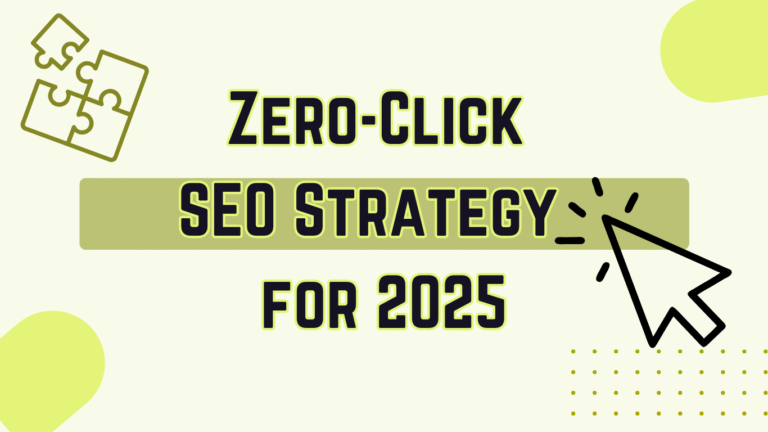Now is an exhilarating time for agencies to discover lead generation tools. There are so many options available for agencies to capture leads and nurture them, from sophisticated CRMs to automation software powered by AI!
In this article, we’ll outline some of the best lead generation tools for agencies and list their notable features.
HubSpot
HubSpot is simply the most well-rounded software; it brings together everything agencies need in one unified ecosystem. It’s so simple to do one thing: design and deliver the end-to-end customer experience. It even offers free tools for landing pages, advertisements, forms, and automated emails.
It also provides deep analytics and reporting dashboards. Instead of juggling disconnected tools with unclear attribution, you get full visibility into the customer journey.
Plus, it comes with contact management and CRM integration built right in. Leads are automatically tracked and organized in the free CRM, making it effortless to nurture, segment, and analyze prospects over time.
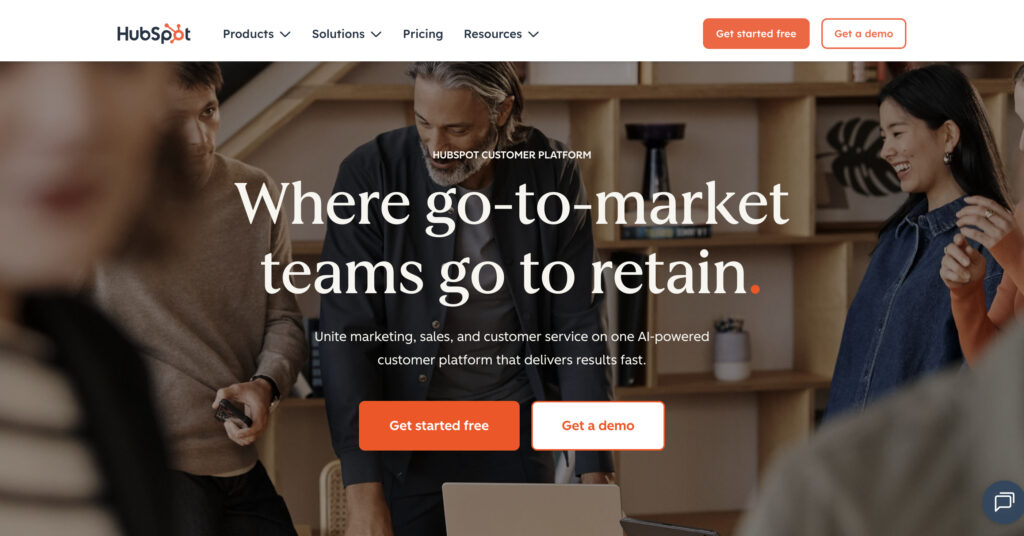
Pros of HubSpot
- All-in-one solution. It seamlessly combines a robust CRM with marketing, sales, and customer service tools.
- Powerful AI and automation features
- Comprehensive lead generation tools.
- Ease of use
- HubSpot’s App Marketplace offers thousands of integrations with other tools.
Cons of HubSpot
- High and complex pricing
- Essential features, such as custom reports and advanced automation, are often not available on the free or Starter plans.
- For smaller agencies or those with very specific needs, the all-in-one nature of HubSpot can be overwhelming and unnecessarily complex.
Pipedrive
If you want to close more deals faster, you need a CRM that’s intuitive and built for efficiency. Pipedrive is designed with agencies in mind, combining pipeline visibility, smart automation, and lead generation into one seamless platform.
It’s incredibly easy to use, with a kanban-style dashboard that lets you visualize every stage of the buyer’s journey, move deals forward, and customize fields for client-specific details. Importing data is quick, and you can track detailed contact histories, link products or services to deals, and sync all client communications in one place.
You also get AI-powered features like automated lead nurturing, follow-up prompts, and forecasting tools to help your team focus on the right prospects at the right time.
The optional LeadBooster add-on includes Chatbot, Live Chat, Prospector, and Web Forms, all working together to capture and qualify leads. Combined with built-in scheduling, lead scoring, and automatic assignment, Pipedrive makes managing your funnel simple while enhancing the end-to-end client experience.
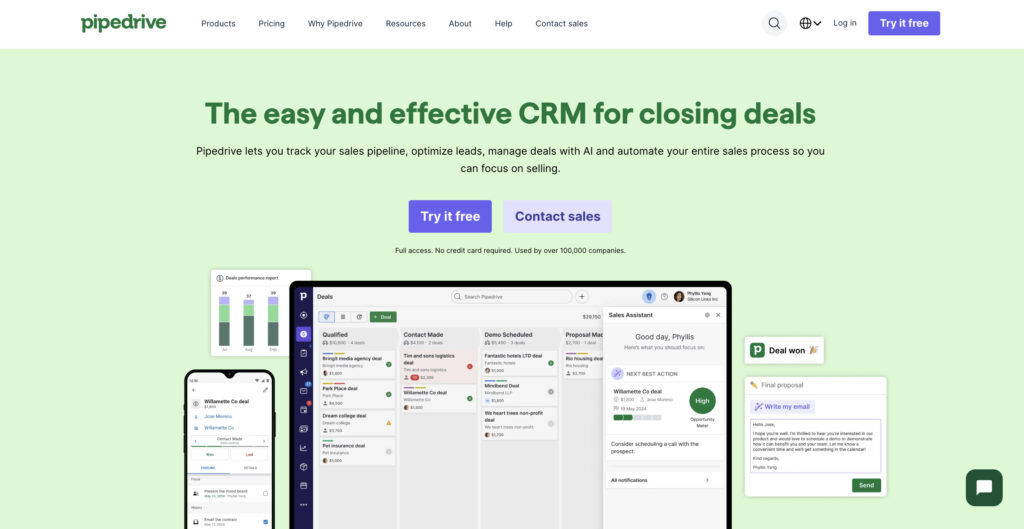
Pros of Pipedrive
- Pipedrive is a CRM designed by and for salespeople.
- User-friendly interface and fast onboarding
- Pipedrive offers a tiered pricing structure that is generally affordable, especially for small to mid-sized teams.
Cons of Pipedrive
- While the add-on model offers flexibility, it can lead to a fragmented approach and rising costs.
ActiveCampaign
ActiveCampaign introduces autonomous marketing powered by Active Intelligence, which learns from your data and executes campaigns aligned with your goals. You get AI agents for ideation, content creation, workflow design, and performance analysis.
For engagement, ActiveCampaign supports email, SMS, WhatsApp, and social messaging. Lead generation is built in, with inline forms, floating boxes, pop-ups, and sticky bars that integrate directly into automations.
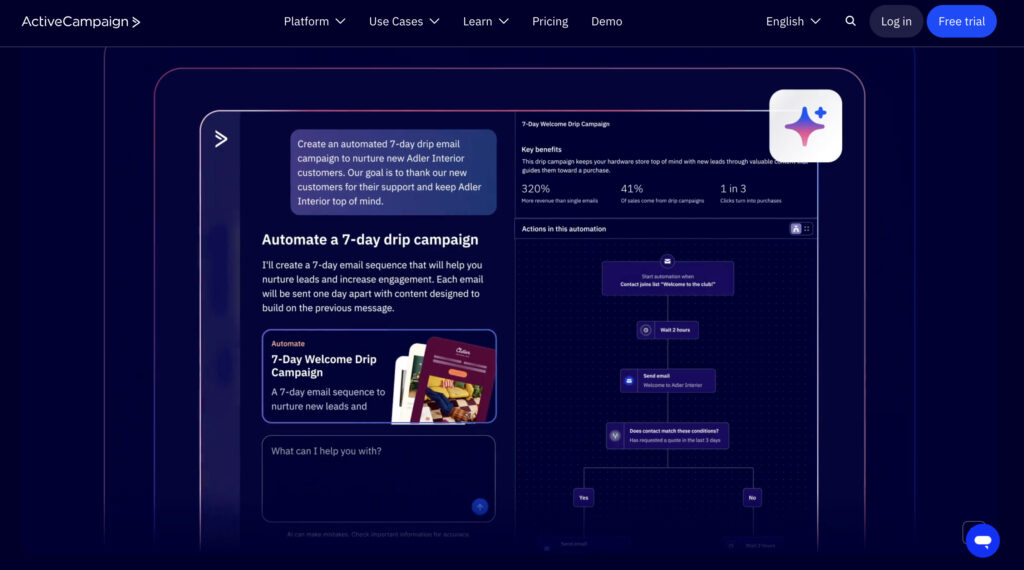
Pros of ActiveCampaign
- Powerful, flexible, and easy-to-use automation builder.
- Offers a built-in CRM that is highly effective for managing the lead-to-customer journey.
- The platform excels at dynamic contact segmentation and tagging.
- Excellent email deliverability rates and A/B testing capabilities, including the ability to split-test entire automation sequences.
Cons of ActiveCampaign
- The built-in form and landing page builders are generally less powerful than specialized tools.
Zoho CRM
There’s no shortage of ways to capture, nurture, and convert leads with Zoho CRM. It brings the entire customer acquisition process into one platform, from inbound attraction to outbound engagement.
You get built-in tools like signup forms and contextual pop-ups, which can be embedded on websites or triggered at the right time to boost conversions. There’s also a customizable landing page builder, making it simple to launch responsive, branded pages for campaigns.
Leads flow directly into Zoho CRM, where they can be segmented, tagged, and nurtured across multiple channels. Zoho also balances inbound and outbound strategies. You can attract leads through SEO, content, and social campaigns, while still running paid ads or capturing prospects at trade shows.

Pros of Zoho CRM
- Built to be highly customizable.
- Excels in sales force automation.
- Comprehensive omnichannel communication
- Zoho CRM is a single tool within the much larger “Zoho One” ecosystem.
- Robust reporting features, with the ability to create custom reports and dashboards from scratch or using pre-built templates. Its integration with Zoho Analytics allows for advanced data analysis.
Cons of Zoho CRM
- Many of the most powerful features are only available on the more expensive Enterprise and Ultimate plans.
- Zoho CRM’s native lead generation tools are more sales-focused. It lacks built-in features for blogging, SEO, or social media management.
LinkedIn Sales Navigator
LinkedIn Sales Navigator is built specifically for B2B lead generation. It uses LinkedIn’s proprietary network data to help agencies find the right decision-makers and build real relationships.
It’s also packed with advanced search and filtering options. You can narrow leads by job title, seniority, location, or industry. Lead Spotlights go even further by showing shared connections, past colleagues, or company followers.
Features like Sales Assistant (beta) and Message Assist can surface qualified leads, suggest engagement paths, and draft personalized outreach messages. Relationship Explorer and Relationship Map let agencies visualize entire buying committees and uncover hidden influencers.
Sales Navigator also offers Account IQ and Lead IQ, which generate instant summaries of companies and decision-makers.
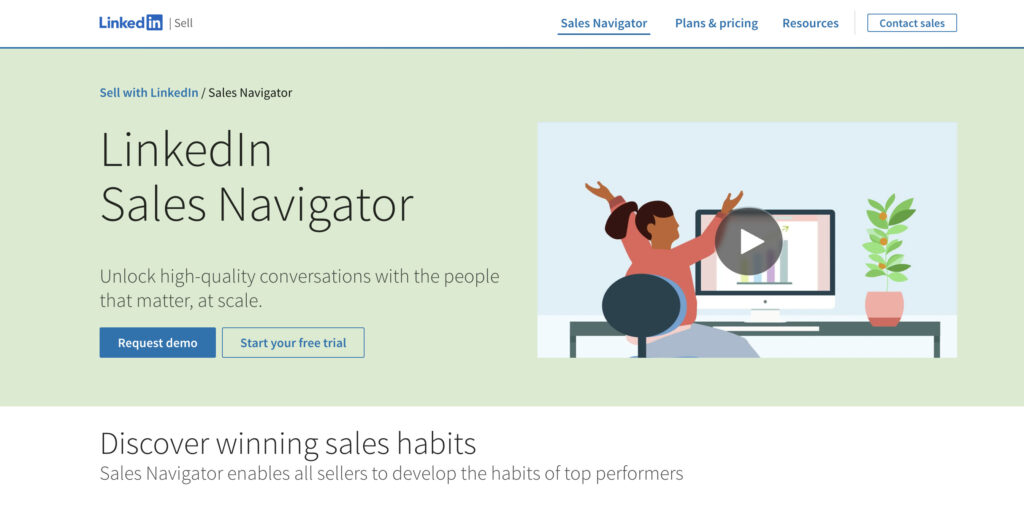
Pros of LinkedIn Sales Navigator
- Provides agencies with access to LinkedIn’s massive professional database.
- AI-powered lead recommendations and insights
- Direct outreach with InMail
- Provides real-time alerts on key events, such as job changes, company growth, and content engagement.
- CRM integration
Cons of LinkedIn Sales Navigator
- The lack of a native CSV export feature for leads.
Expert opinion
If people like you, they’ll listen to you, but if they trust you, they’ll do business with you.

Zig Ziglar
ZoomInfo
The quality of your data plays a critical role in the success of your agency. After all, you can’t drive pipeline growth if your leads are outdated or your targeting is inaccurate.
ZoomInfo continuously enriches and validates its data. Its AI-powered insights and automation tools help agencies not only identify in-market buyers but also prioritize accounts, streamline workflows, and align sales and marketing teams.
With ZoomInfo, agencies can instantly filter through millions of companies using firmographic, technographic, and intent data to uncover high-potential segments. Instead of spending hours on research or relying on guesswork, they can pinpoint accounts showing active buying signals and build campaigns around them.
Tools like the Live Buyer Intent Engine ensure outreach is both timely and relevant.
Beyond discovery, ZoomInfo delivers deep account intelligence. From org charts and hidden influencers to real-time organizational changes, agencies get a complete picture of every account.
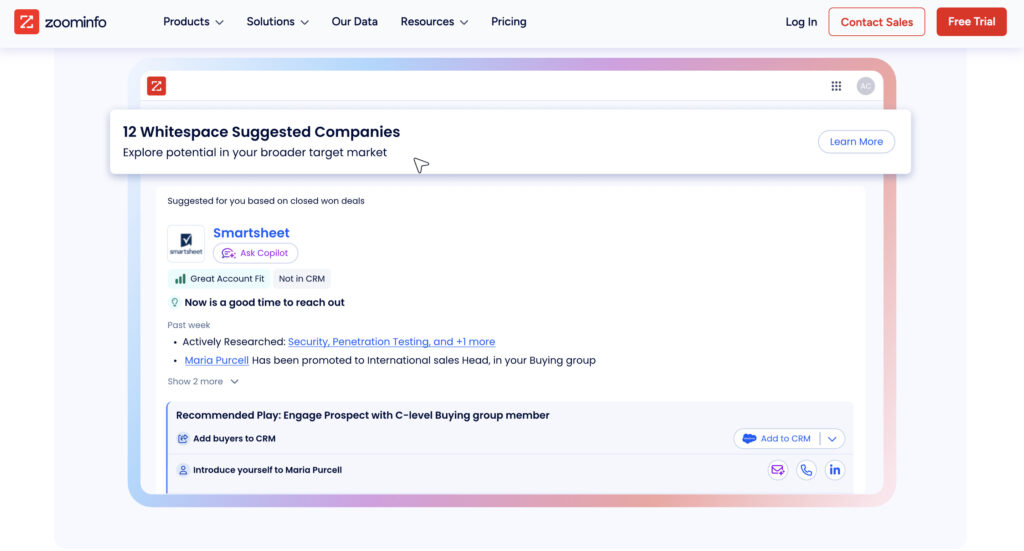
Pros of ZoomInfo
- Exceptional B2B database and data enrichment
- Powerful buyer intent and signals
- AI-Powered insights and sales automation
- Excellent for outbound strategy
Cons of ZoomInfo
- Steep learning curve and implementation
Lusha
With its AI recommendations, automated prospecting, and global B2B data, Lusha enables agencies to minimize the heavy lifting of lead generation. For example, AI Recommended Lists are features available to have access to curated company and contact lists instantly matching the ICPs of clients.
Instead of static research, Lusha delivers live, evolving lists that adapt to engagement patterns and market shifts. AI Prospect Playlists take this further, transforming lists into automated streams of new, relevant leads.
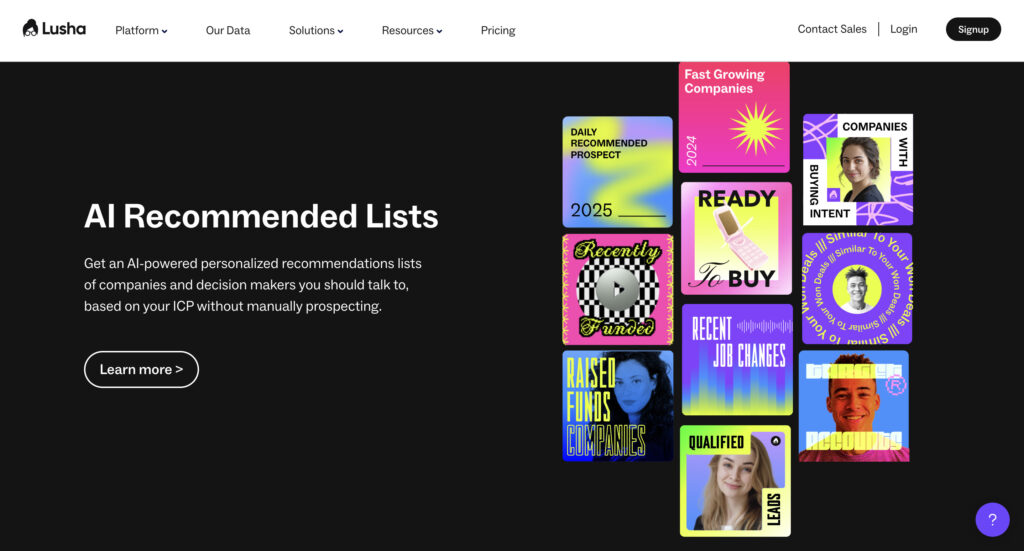
Pros of Lusha
- User-friendly interface and highly effective Chrome extension.
- Highly accurate and verified contact data
- AI-powered prospecting and insights
- Flexible and affordable pricing for SMBs
Cons of Lusha
- Limited data coverage for niche markets
Apollo.io
Apollo.io gives agencies a single platform to handle their entire outbound sales process. The Pipeline Builder from Apollo.io makes it simple to set ICPs, create targeted prospect lists, and get verified contact info. Its AI suggestions help ensure that outreach campaigns include leads that fit well and show strong interest.
The Call Assistant brings another layer of power, providing real-time transcription, AI-driven insights, and automatic next-step recommendations.
Apollo.io also solves the problem of data hygiene with continuous Data Enrichment. Instead of working with outdated or incomplete records, agencies always have clean, accurate, and actionable client databases that improve targeting and personalization while driving higher ROI.
And with its all-in-one Go-To-Market Platform, agencies can manage outreach, engagement, reporting, and deal progression in a single ecosystem.
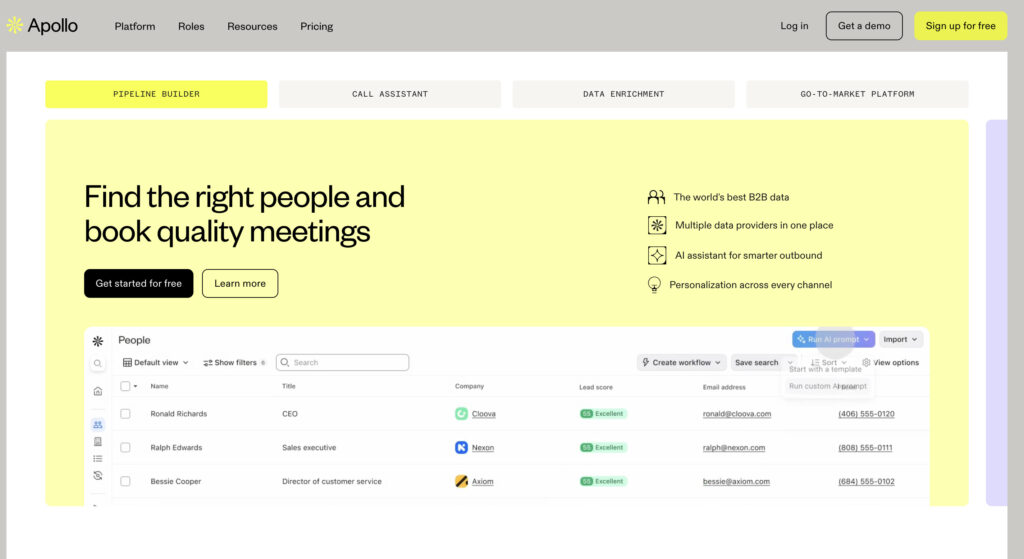
Pros of Apollo.io
- All-in-one sales intelligence and engagement
- Massive and granular B2B database
- Effective multichannel outreach automation
- AI-powered feature for lead scoring, email writing, and providing actionable insights.
- Seamless integrations with major CRM systems like HubSpot and Salesforce.
Cons of Apollo.io
- Limited customization and analytics
Hunter
Out of the box, Hunter offers agencies one of the most reliable and streamlined lead generation solutions. This includes accurate contact data, verified emails, and built-in email outreach tools.
Hunter’s data system uses its own technology and AI to find and verify decision-maker contact details. Tools like Domain Search, Email Finder, and Email Verifier help agencies build high-quality prospect lists with confidence.
Its Campaigns feature turns cold outreach into a process that can grow, with personalization, automatic follow-ups, and detailed reports. All of this is sent straight from Gmail, Google Workspace, or Outlook to improve delivery rates.
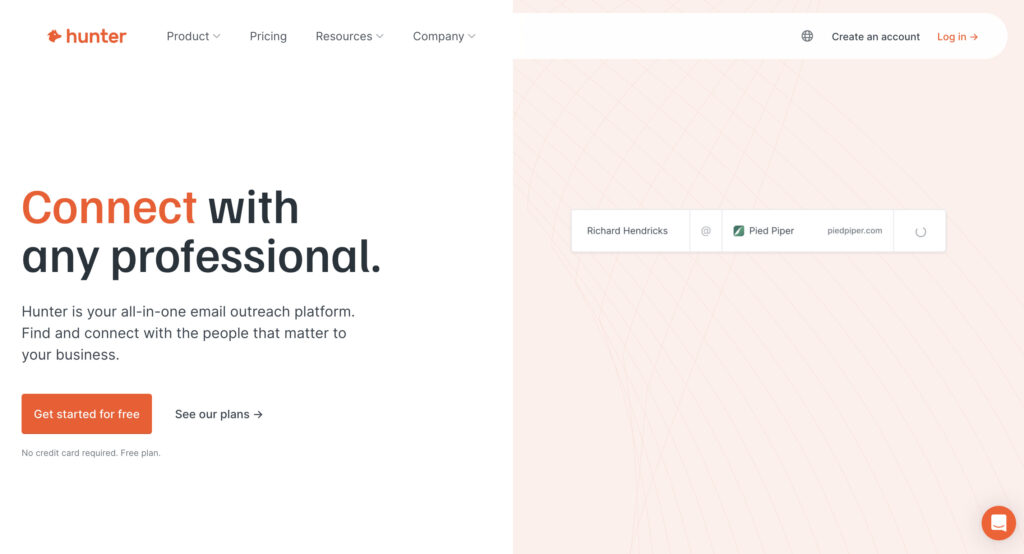
Pros of Hunter.io
- The platform is incredibly easy to navigate.
- Highly accurate email verification.
- Effective and streamlined prospecting tools.
- Pricing is affordable and transparent.
- Built-in email campaigns.
Cons of Hunter.io
- Missing deep, granular data (such as technographics, buyer intent signals, or detailed company insights) that platforms like ZoomInfo or Apollo.io have on offer.
- The effectiveness of Hunter depends heavily on the availability of public information.
OptinMonster
OptinMonster doesn’t operate like traditional lead databases or outreach tools. However, it is highly adaptable through its wide range of campaign formats, targeting rules, and automation features.
Agencies can choose from popups, floating bars, slide-ins, overlays, and countdown timers. With prebuilt templates, these campaigns are easy to customize, mobile-friendly, and optimized for conversions.
To make things work better, OptinMonster also has built-in A/B testing, instant analytics, and in-depth reports.
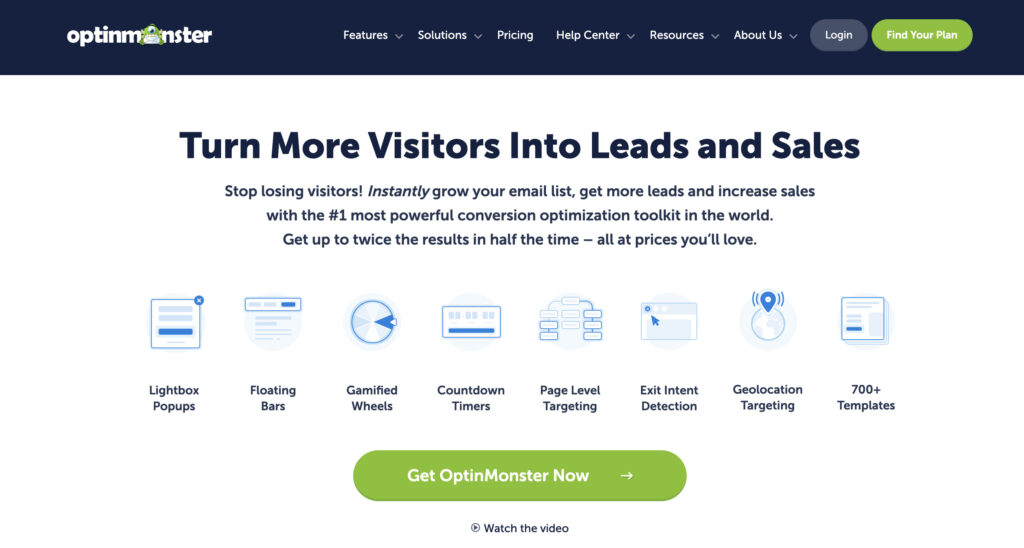
Pros of OptinMonster
- A leader in on-site conversion optimization.
- Advanced targeting and behavioral triggers
- Extensive template library and drag-and-drop builder
- A/B Testing and analytics
Cons of OptinMonster
- May not be suitable for all audiences: While pop-ups and on-site campaigns can be highly effective, some users and audiences may find them intrusive or annoying.
Intercom
Intercom is built on a platform originally designed for customer service. Therefore, it already includes much of the functionality needed to engage, support, and convert inbound traffic into leads. Its Fin AI Agent, for example, can resolve customer queries instantly, handling complex processes like refunds or account updates while also creating opportunities for upsell and lead capture.
The Intercom Customer Service Suite, which integrates AI with a modern Helpdesk, allows agencies to automate routine inquiries, free human agents for high-value conversations.
Additionally, the Fin AI Engine powers the system with speed and accuracy, ensuring that every interaction is consistent, brand-aligned, and conversion-focused. Combined with tools like Copilot and personalized campaign configurations, agencies can transform customer service conversations into a scalable lead generation and sales enablement channel.

Pros of Intercom
- Exceptional conversational marketing and live chat
- Powerful AI-powered Chatbots (Fin AI Agent)
- Advanced automation and proactive messaging
- Rich data and analytics
- User-friendly interface
Cons of Intercom
- Steeper learning curve for advanced features
Read more Best AI Chatbots for Websites
Half of marketers say lead generation tops their list of campaign priorities. These days, cutting-edge tools for lead generation mix automation, AI, and advanced analytics to help agencies grab, nurture, and turn leads into customers more. By tapping into integrations and using advanced data insights, agencies can cut down on time while drumming up better-quality leads.
Conclusion
Now that we’ve explored the top lead generation tools for agencies. Compare these platforms side by side and choose which tool is the best fit for your agency’s growth goals.
Frequently Asked Questions




